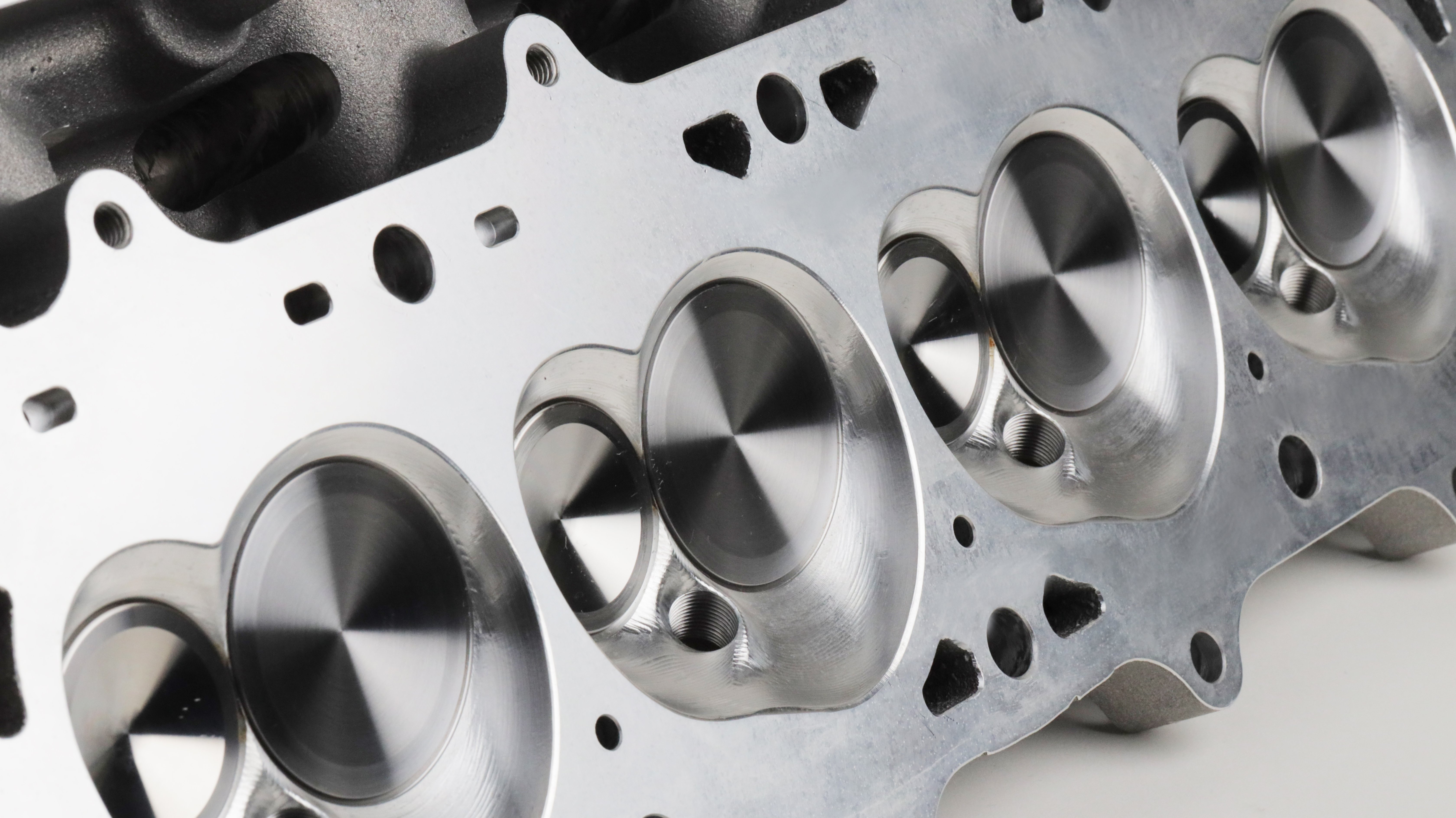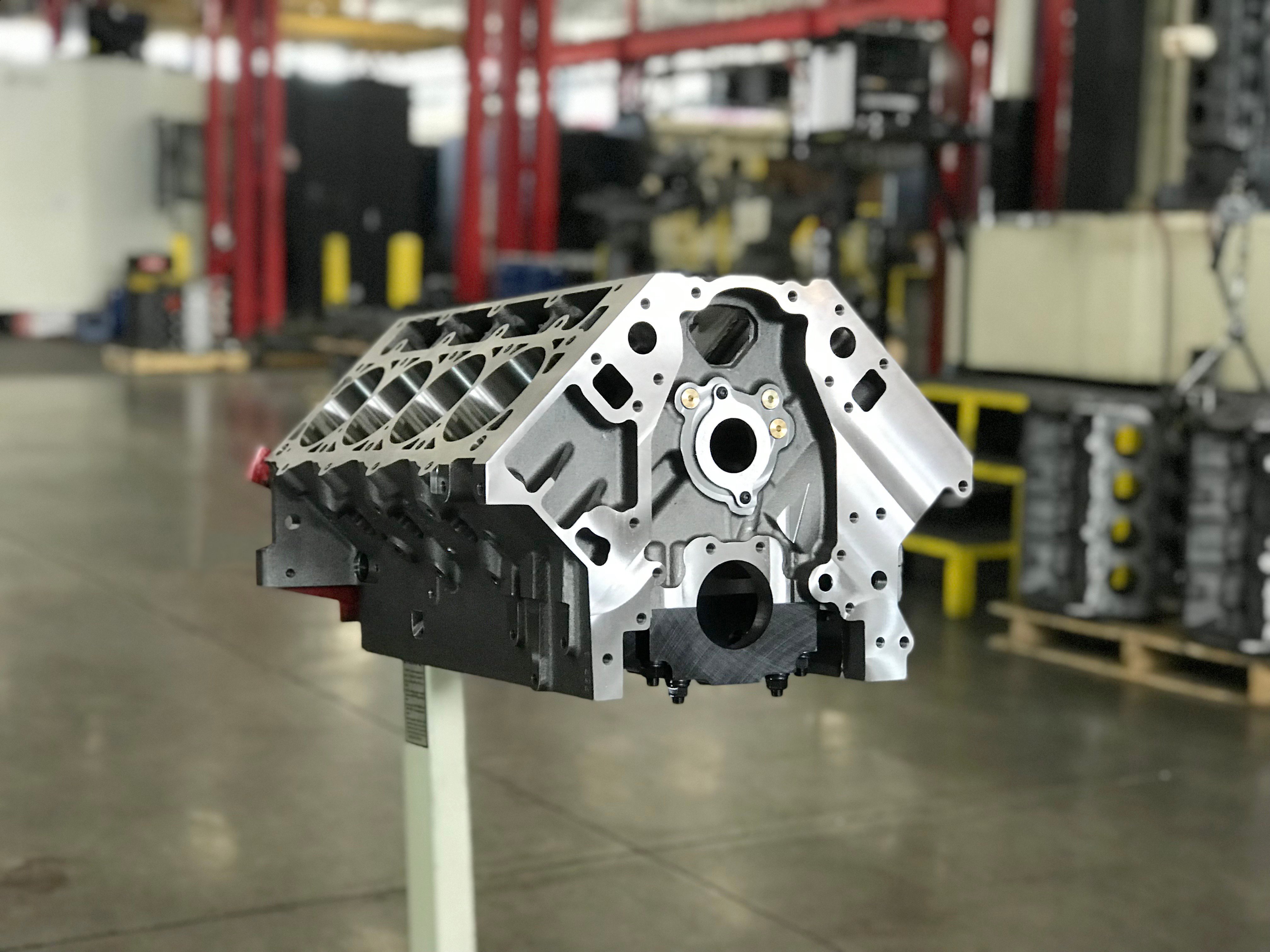Dart's new line of LS7-compatible PRO1 heads package serious air flow with plenty of high-end racing features. Follow along as we dive into these fresh horsepower-boosting castings.
When it debuted in the 2006 Corvette as the Z06 option, the LS7 quickly became the darling of the LS crowd. Combining 7.0L (427ci) with the best cylinder head yet for the LS family of engines, it has become a performance staple for the true believers of normally aspirated power.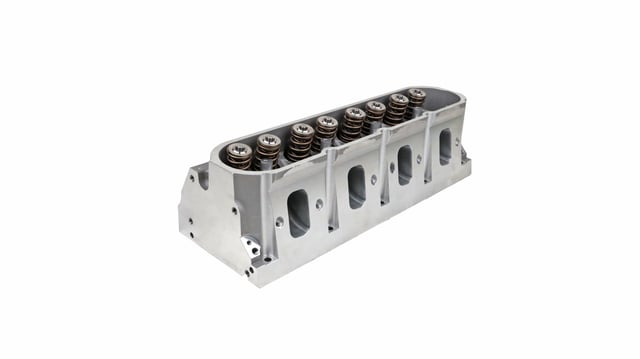
But as good as the production LS7 was and is, there’s always room for improvement. Dart has recently introduced its PRO 1 285cc CNC version of this head and it's worthy of a closer look.
|
Valve Lift |
Dart Int. |
Dart Exh. |
|
0.200 |
162 |
118 |
|
0.300 |
233 |
164 |
|
0.400 |
293 |
208 |
|
0.500 |
334 |
230 |
|
0.600 |
361 |
244 |
|
0.700 |
380 |
252 |
|
0.800 |
381 |
263 |
To start, let’s take a look at what makes the LS7 different from an LS3 because it is these details that makes this cylinder head not entirely interchangeable with its LS cousins.
Valve angles have been constantly evolving in the last two decades. The original small-block Chevy angle (referenced against true vertical) was 23 degrees for nearly a half-century before it became obvious that standing the intake and exhaust valves closer to vertical would improve airflow by making the short-side turn in the port more gentle. The standard LS valve angle radically improved the small-block Chevy from 23 to 15 degrees but the LS7 took that even further with a push to a 12-degree angle.
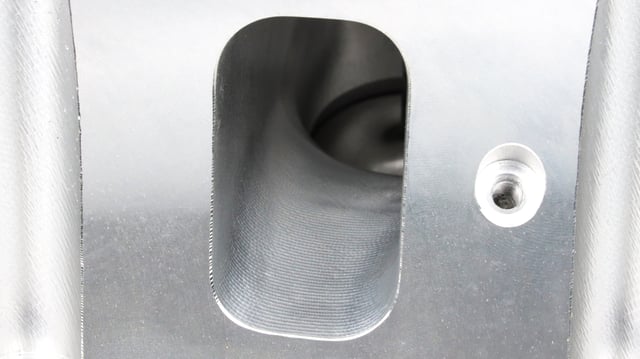
Along with this angle change, the intake manifold mounting surface and intake port location also evolved which makes the LS7 head unique to its own valvetrain and intake manifold. This taller 12-degree angle also necessitates its own piston valve reliefs in order to ensure adequate piston-to-valve clearance with more aggressive valve lift numbers that are part of the LS7’s design goals.
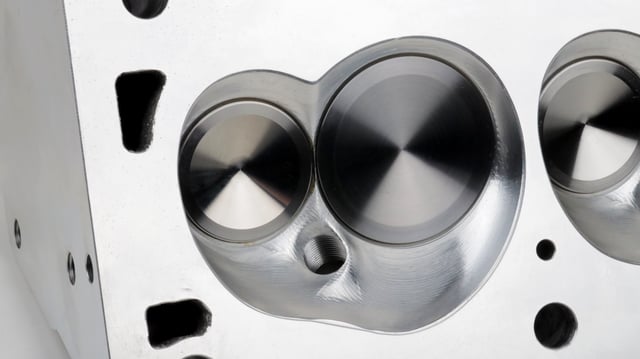
With this impressive factory effort, Dart understood there were many areas where improvements could be added that would make this cylinder head even better for both power and reliability. When specific horsepower per cubic inch capabilities with normally aspirated engines move into the 2.0 hp/ci range, reliability is an important factor.
Starting with the overall casting, Dart has retained the stock position for the intake and exhaust port flanges, valve angle, and valve sizes to enhance interchangeability with the stock head. The biggest reason for choosing the Dart head relates to important additions that the Dart head offers that do not exist with the factory castings. Perhaps among the most important is two additional cylinder sealing bolts. One potential weakness with all LS engines is the factory four-bolt cylinder head pattern. Assuming that this head will be see both aggressive normally aspirated adventure and power-adders such as nitrous, superchargers, or turbochargers the Dart head is equipped with a 6-bolt pattern.
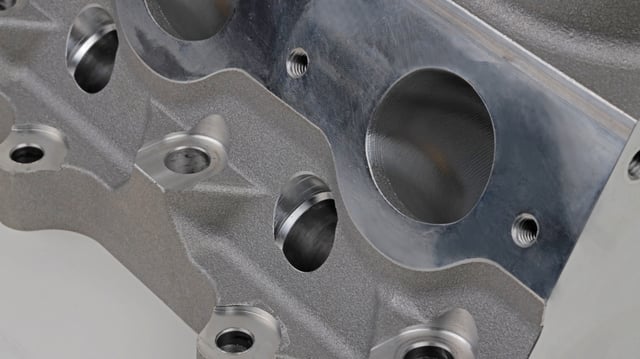
These extra bolts are intended to be used with a matching Dart LS Next block that offers the additional cylinder clamping option. This allows pushing the cylinder pressure envelope while minimizing the danger of pushing out the head gasket. Accompanying these additional fasteners is a thicker 0.750-inch deck surface that is common among all Dart LS head packages and also promotes gasket sealing.
Part Numbers
|
Description |
Max Lift |
PN |
|
Dart LS7 12-deg. C-Core bare casting |
N-A |
11060000 |
|
Dart LS7 12-deg. Bare, Dart rocker bar |
N-A |
11060080 |
|
Dart LS7 12-deg. Bare, Jesel rocker bar |
N-A |
11060080J |
|
Dart LS7 12-deg. 1.290” beehive, hyd. roller |
0.625 |
11061182 |
|
Dart LS7 12-deg. 1.295” dual, hyd. roller |
0.650 |
11061183 |
|
Dart LS7 12-deg. 1.310” dual, solid roller |
0.650 |
11061184 |
|
Dart Pro 1 LS 12-deg. single plane carb intake manifold |
N-A |
45311021 |
Along with high cylinder pressure is the promise that these heads will also see higher engine speeds. Addressing this concern is Dart’s option of using either the standard LS7 rockers with a Dart billet rocker bar or with optional machining that will accommodate a Jesel shaft rocker arm system. Dart also offers a range of different valve spring options from a street-oriented beehive to an aggressive dual spring combo for hydraulic roller lifters all the way up to a larger 1.310-inch diameter dual spring for mechanical rollers that will require adjustable rockers for lash. These more sturdy springs place the maximum valve lift at 0.650-inch.

A stock LS7 chamber comes in around 70cc but the Dart Pro 1 version enjoys a much more enhanced fully-CNC machined chamber that measures 66cc. This may not seem like much, but this slight change is worth almost exactly a half ratio of compression, depending upon your configuration. This tighter chamber also makes it much easier to create compression in a competition engine without resorting to obtrusive domes that negatively affect flame travel.
The larger, 285cc intake ports also enjoy the advantages of complete CNC porting that exactly matches the design as opposed to as-cast ports that may suffer from slight variations due to casting variables. All this points to enhanced flow as evidenced by the accompanying flow chart that reveals this head is capable of 381 cfm of airflow at 0.800-inch valve lift. These are equivalent big-block Chevy flow numbers but delivered in a far lighter and more efficient overall package.
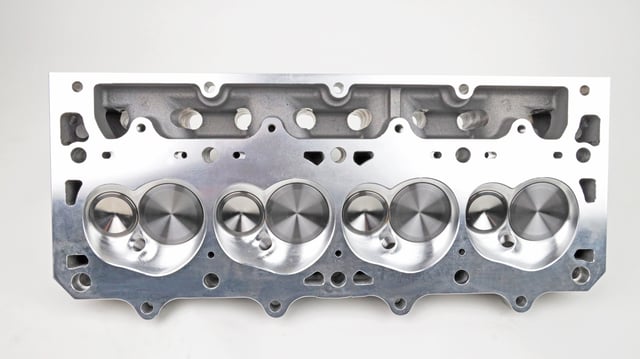
A recent Dart dyno test on a 427ci Dart SHP short block with the LS3 style 15-degree Dart heads destined for Drag Week cranked out 759 hp at 7,300 rpm with 600 lb-ft of torque at 5,900. With the obvious flow advantages of this latest PRO1 12-degree head, higher horsepower numbers are certainly possible. The 285cc PRO1’s taller valve angle and valvetrain enhancements all point to positive top-end horsepower possibilities.
As an added benefit, Dart also offers a LS7 style intake manifold to compliment the new heads. The 4150 style carbureted manifold comes as a split design where the manifold is split vertically in the center to allow custom porting or in-house CNC porting by Dart.
For more great technical information, make sure to check out all of the Dart blog!

